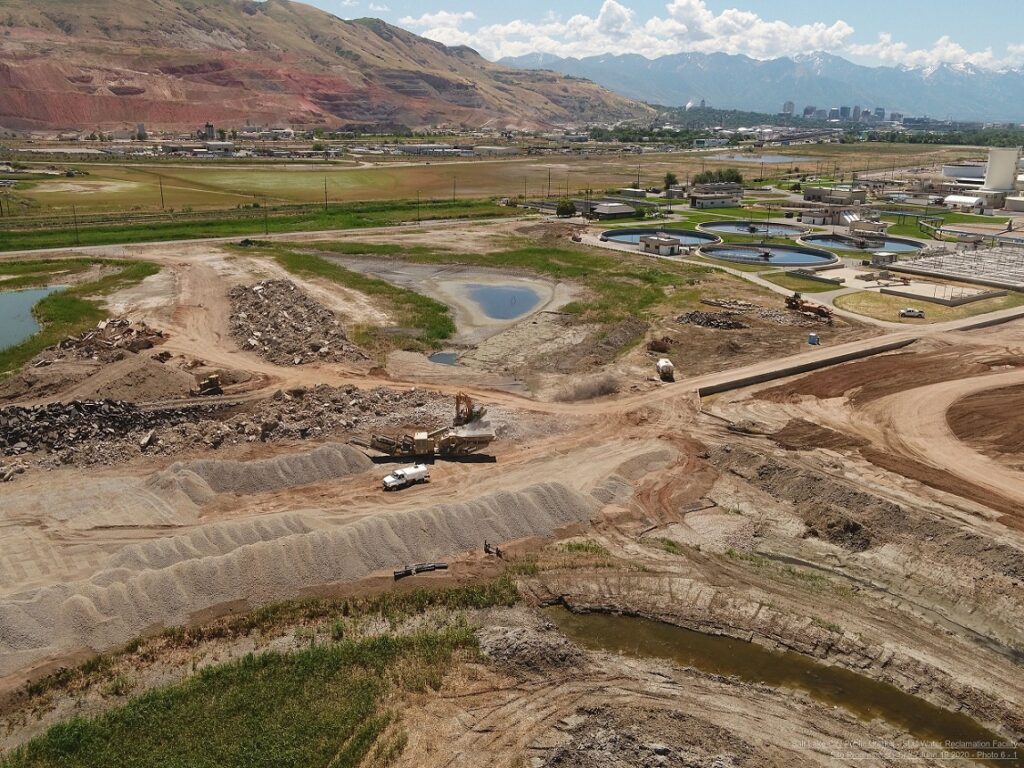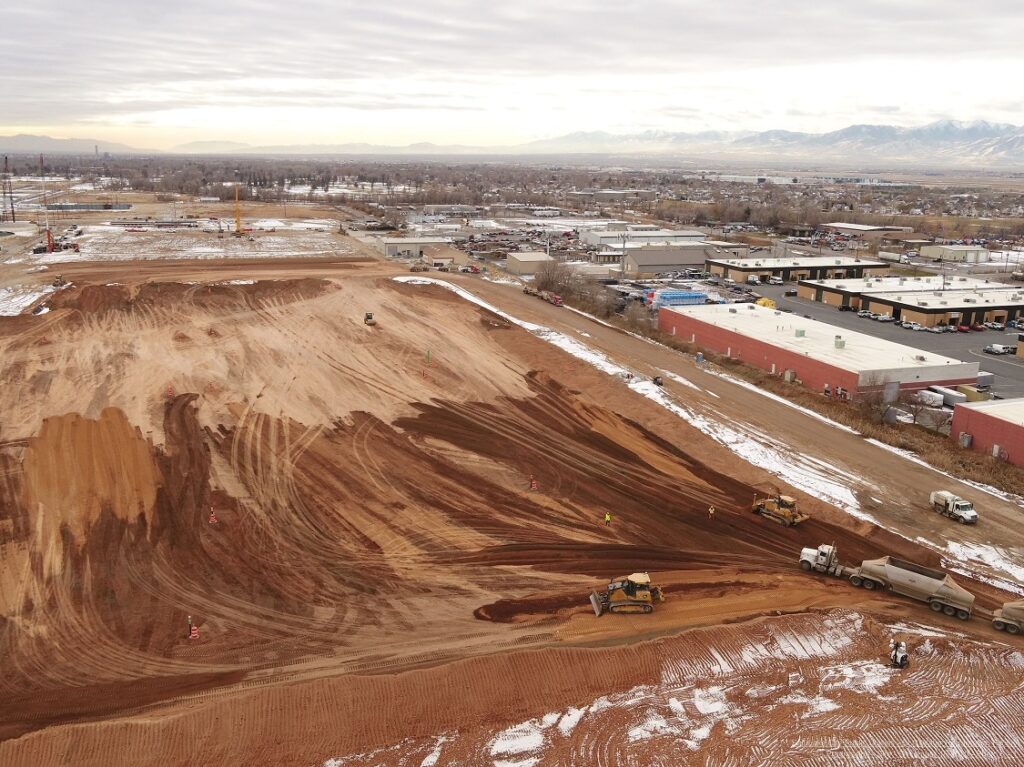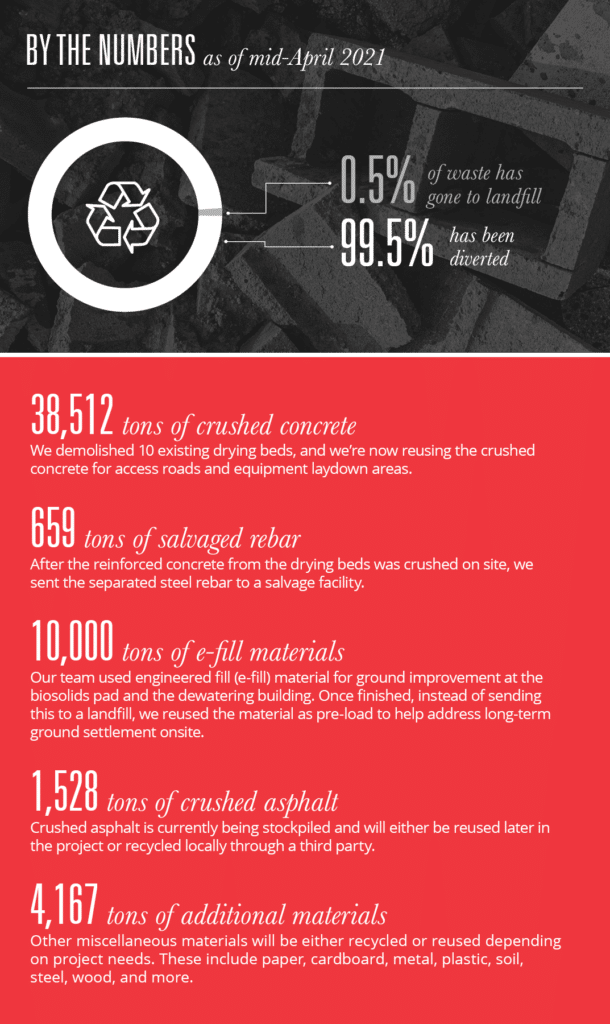Earth Day is here, and from the halls of Congress to state and city agencies across America, there’s a lot of buzz around infrastructure spending and sustainability. The actual work of building and rebuilding infrastructure sustainably, however, has seen less attention. Environmentally speaking, construction’s carbon footprint and landfill waste are no small matter, and this conversation usually pivots to LEED standards for occupied buildings. But what about projects like bridges, flood control structures, light rails, and water treatment plants?

Envision, a sustainability rating system that’s rapidly gaining ground in the industry, is designed to help project owners, designers, and contractors create the most sustainable and resilient infrastructure possible. In Salt Lake City, Utah, Sundt and joint-venture partner PCL Construction are rebuilding a 48-million-gallon per day water reclamation facility (WRF) with a verification goal of Envision Platinum. According to Sr. Project Engineer Jenn Graves and Sr. Project Manager James Atkins, the process to get there takes commitment and collaboration.
A City with a Vision, a Project with a Purpose
In 2017, then-Mayor Jackie Biskupski signed an executive order calling for citywide collaboration on sustainability, including a move toward net-zero buildings and sustainable infrastructure. The city chose to pilot Envision for the new WRF, both to reap its sustainable benefits and to see how the framework could apply to future municipal projects. Thus far, the project is shaping up to be a promising case study.

As the only water treatment plant in Salt Lake City, the new WRF needs to do several things well. Replacing a 55-year-old plant and bringing it up to code with future EPA regulations is just the start. There are 64 possible credits in Envision, including everything from protecting soil health to evaluating long-term maintenance costs, to reducing air pollution, to using recycled materials. This may seem like a lot of things to keep track of—and it is. But to PCL’s James Atkins, it boils down to our team’s commitment: we’re here to be good stewards of the environment and the resources entrusted to us.
All of us—owner, designer and contractor—live and work in these communities, and we want to be the best possible stewards of our environment. Envision is helping us do that in the way we build new infrastructure. We’re reducing our carbon footprint and capturing all of that data and new knowledge as we move forward.
– James Atkins, Sr. Project Manager, PCL Construction
Collaboration is a Do-or-Die, not a Nice-to-Have
Earning Envision verification requires a project to achieve a minimum percentage of the total applicable Envision points. Platinum recognition is 50% of total possible points, which is easier said than done. “Part of the challenge is that some credits are builder-only, some fall to the designer, some to the owner, some to the plant staff, and some to all four,” said Sundt’s Jenn Graves. “So, we really need to have everyone on the same page—otherwise, we miss out on key conversations.”

Jenn and James each pointed out that project delivery method is crucial in establishing a high degree of collaboration early on. “Using the old-school approach of design-bid-build, it would be much harder to achieve the level of verification we’re aiming for,” said James. Since this is a construction manager at risk (CMAR) project, Sundt|PCL was involved in the project’s early phases. “As we worked through different design conflicts, people on all sides were already finding ways to make things more sustainable.”
Another reason for the team-based approach is that our Envision plan is a live document. Over the course of a five-year project, things are bound to change, and team members have a long list of responsibilities to juggle. According to Jenn, buy-in is needed to adapt the plan alongside the project—and a lot of that is already here.
So many different scopes, trades, and quantities are constantly in motion. You need leaders across the site to take ownership in tracking down this data. We already have that kind of culture here. One of our field superintendents even created his own QR code system to track the amount of construction water we’re using. That level of teamwork—and the ideas that come out of it—is what makes us more sustainable.
– Jenn Graves, Sr. Project Engineer, Sundt Construction
One of the point categories that will decide Sundt|PCL’s success in achieving Envision Platinum is Resource Allocation. In this area, we’ve committed to recycling, reusing and/or salvaging at least 50% of all waste materials. As the graphic below shows, the project is currently well above this mark.

For both Jenn and James, these results are amazing—but they aren’t a surprise. They are the result of the project team’s work to make sustainability a real priority. “With anything new that comes out in this industry, people tend to think, ‘Why would I want to be involved with that? My job is difficult enough,'” said James. “But with these efforts, which Jenn has really spearheaded, people’s attitudes are shifting on why it’s important to build sustainably. And in the long run, the owner and the community will benefit from that.”